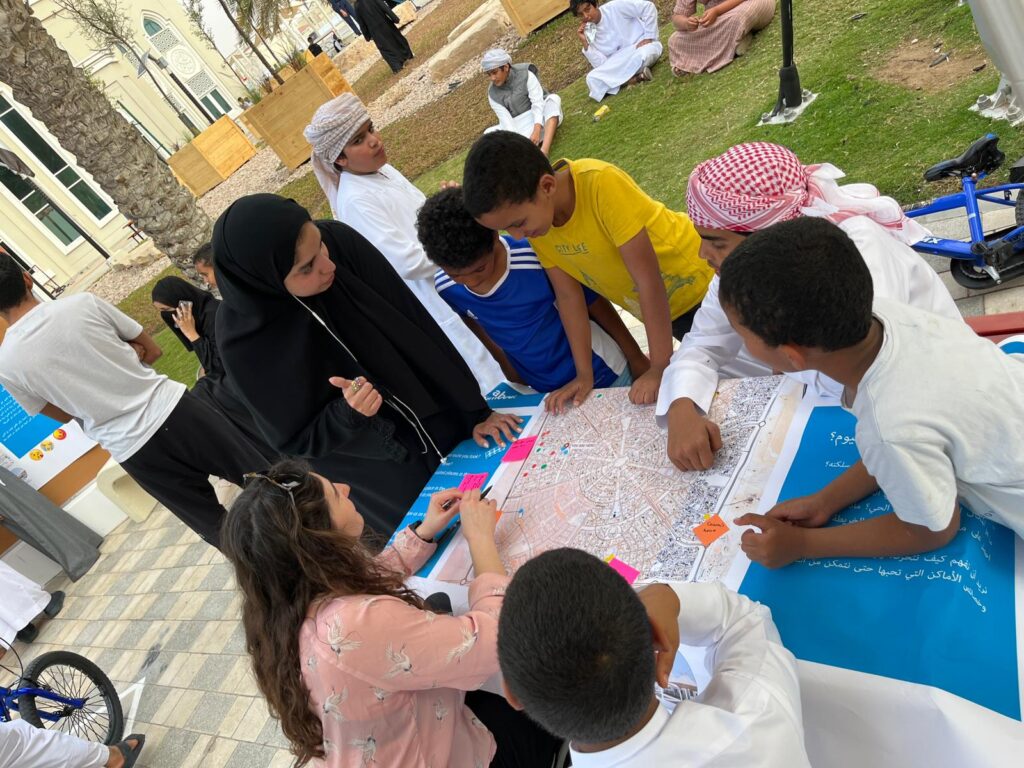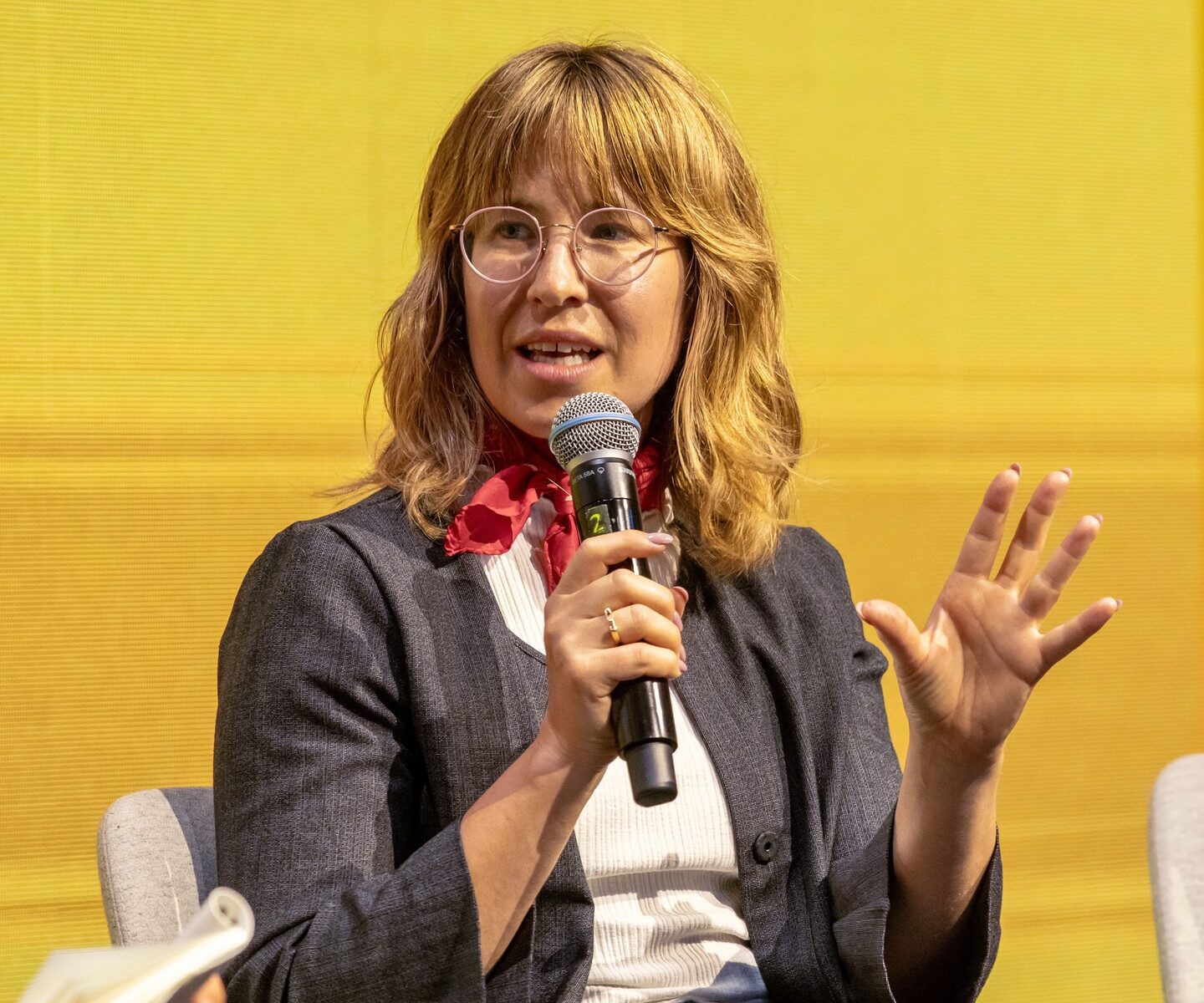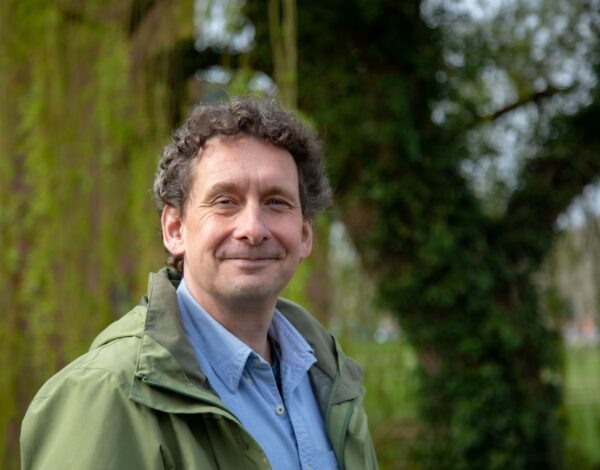Sophia Schuff is a passionate advocate for designing cities that prioritize the well-being of both people and the planet. As a Director at Gehl, an urban design practice on a mission to create more equitable, healthy, and sustainable cities, she leads Gehl’s portfolio serving the Philanthropy sector. In this role, she advocates for urban transformation through improving social, health and wellbeing outcomes.
Sophia’s commitment to enhancing the urban experience stems from her background as an anthropologist and deep understanding of the human experience within the built environment.
Tell us a little bit about yourself
I grew up in the foothills of Northern California’s Sierra Nevada mountains in a small gold rush town. In my youth urban settings were very foreign and thrilling to me. From a young age I had a deep curiosity of the world and the people who make it up. Making cities incredibly alluring even from a young age.
I first lived in Portland, Oregon where I attended college studying themes around anthropology, urban design and community development. I was hungry even back then to dive deep into our shared and disparate cultures and the human experience, hoping to find ways to blend these fields together to improve people’s quality of life through collaborative solutions. I loved the idea of using anthropology as a bedrock for design.
“In a time when cities are facing resource scarcity—shrinking budgets and growing urban challenges—getting more tactical with urban growth strategies is crucial. Don’t let the fear of failure hold you back.”
How/why did you become an urban anthropologist?
Soon after my studies I began a health promoting urban design collective with a group of friends who, like me, have backgrounds in human geography, sociology and landscape architecture. Together we were exploring what it looks like when you apply anthropological methods of studying people in urban contexts in order to create urban strategies. We were all academically students of Jan Gehl, attempting in our own way to add layers of social, mental and physical health to his observational toolbox.
For example, we were running in-depth observational exercises and long-term engagement processes with rural communities in Norway to create cultural plans to help small municipalities attract young people back to their home villages once they finished university. What makes a young person move back home from the big city, seek out a job and start a family? How can we build up an evidence base that would encourage a city to develop an art and culture program as a key investment in their municipal budget?
Simultaneously I was teaching a few courses in Copenhagen on visual culture of cities, sustainable liveability and bicycle urbanism. This was a transformative time for me as I found out my passion lies in applying a more theoretically informed mindset to urban development, bringing a pedagogical approach to working with communities and change makers.
In 2016 I came to Gehl, where I have been for the past eight years, continuing to deepen the Urban Anthropological practice with my colleagues here.
What is your favourite city/cities and why/what can we learn from it?
Perhaps because I have been visiting Tokyo in the past year it is quickly becoming one of my favorite cities. I’ve been discovering the city slowly but am impressed by how it manages its high population density. The clever land use maximizes extremely limited space without compromising livability. It’s a great example of how a dense city can still offer beautiful green spaces, quiet residential areas, and vibrant really charismatic commercial districts. The public transportation system is not just efficient – it’s integrated so well that commuting is easy and also reduces the city’s carbon footprint. The city’s history of redevelopment leads to an ever-evolving landscape. Tokyo is constantly reinventing itself, whether through the development of new districts or adaptive reuse of existing structures.
When I was there most recently, I received a tour from Heiwa Real Estate who has been slowly redeveloping the Nihombashi district. I was impressed to see Japan’s first tall hybrid timber building called KITOKI in the district alongside some amazing adaptive reuse structures that act as this interesting bridge between Tokyo’s history and modern development trends.
You are working as a director and urban anthropologist at Gehl’s Copenhagen studio. How do you see the intersection between city making, civic engagement, health and anthropology in relation to urban challenges in today’s cities – what are the most pressing challenges and in your view, most potential solutions for them?
I think the industry is seeing this intersection as the future, particularly as a response to cities growing health inequities, climate change, and social disconnection. Ethnography, for example, allows planners to observe and document everyday behavioral patterns and social dynamics, providing insights that go far beyond a standard data-driven analysis. A critical issue is the fragmentation of urban life—physically and socially. To counter this, we can prioritize designing public spaces and a public realm that fosters social cohesion, encourages active lifestyles, and responds to local cultural contexts. Helping urban planners be more reflective of the communities they serve.
Participatory design processes have been a hot topic for the last decade, but it does harness important local knowledge that can empower communities to be part of the solution when creating resilient, adaptable infrastructure that meet today’s needs and are future-proofed for future challenges. Intersecting health and anthropology with urban planning is a good way to cultivate cities that are not only livable but thriving.

Do you see potential in solutions like Parkly for developing urban environments?
Back in 2005, a group of artists and designers in San Francisco transformed a parking spot into a public space where people could hang out, sparking the first parklet and the concept of Park(ing) Day. A few of the key figures from that movement joined Gehl in 2014, which was a perfect match of urbanists passionate about using tactical urbanism and early activation to drive long-term urban transformation. Since then, parklets and other reclaimed public spaces have evolved in countless ways, helping cities and practitioners alike to catalyze institutional change.
Gehl and Parkly are driven by a shared vision to Bring People Together. Without cost-effective furniture that can draw diverse groups of people to shared public spaces, we wouldn’t be able to quickly pilot projects and test their impact within communities. Parkly can help urban designers and planners create inviting spaces that enable new social connections and serve as the starting point for broader urban transformations.
What is your advice for cities interested in integrating more tactical actions for making their cities more liveable?
In a time when cities are facing resource scarcity—shrinking budgets and growing urban challenges—getting more tactical with urban growth strategies is crucial. Temporary use and activation strategies can offer great benefits, but I’ve learned three key lessons from working with and assessing tactical interventions globally.
- First, you’re not done once you’ve built a pilot. Many projects start as temporary pilots to build consensus, test ideas, or generate momentum. But too often, these projects don’t receive the necessary follow-up investment, leading to faded bike lanes, neglected planters, or deteriorating furniture. This neglect can make communities feel undervalued and overlooked.
- Second, don’t let the fear of failure hold you back. Some cities hesitate to fully commit to tactical projects because they worry about failure, leading them to invest heavily in risk assessments and engagement efforts, which leaves little room for experimentation. We encourage embracing a culture of moving quickly, learning from each project, and accepting imperfection. Engagement can be a key part of this, but shouldn’t replace action and implementation.
- Finally, reduce the red tape for community-led projects. In Copenhagen, for example, the Co-Create Copenhagen policy has made it easier for local communities to launch tactical projects. By reclassifying pilots as events, the permitting process is less cumbersome. Now, if a group wants to close a street for a weekend flea market, they don’t face the same bureaucratic hurdles they once did. This kind of policy shift is a powerful tool for empowering communities to take an active role in shaping their urban environments.


What is the most important topic at the moment for a city such as Copenhagen, your home city, in terms of developing it towards a greener, healthier, and more social city? Copenhagen is one of the leading cities in this regard, but what more could be done?
Copenhagen has done a great job reducing its direct emissions through green energy and smart urban planning, but the next big challenge is tackling the emissions from the products and services people use every day—things like food, clothing, electronics, and building materials. To stay at the forefront of sustainability, the city could focus on cutting its overall carbon footprint by promoting a circular economy, encouraging people to adopt more sustainable habits, and making it easier to understand the carbon impact of what we buy. By doing this, Copenhagen can go beyond just cutting local emissions and start addressing the broader environmental impact of everyday lifestyles.
Dream big! What does an ideal future city look and feel like?
I always go back to the rule of thumb that a wonderful city for all people is a city that prioritizes small children, vulnerable communities and elderly residents. That might look like a lush, green, accessible, dense, safe, abundant, joyful city that allows for genuine moments of awe and reciprocity. I’d recommend readers to listen to On Being’s podcast interview with Dr. Dacher Keltner who talks about the science of awe and his book Awe: The Transformative Power of Everyday Wonder. This interview is a lovely reflection on what we see if we were to put awe at the center of urban planning.


